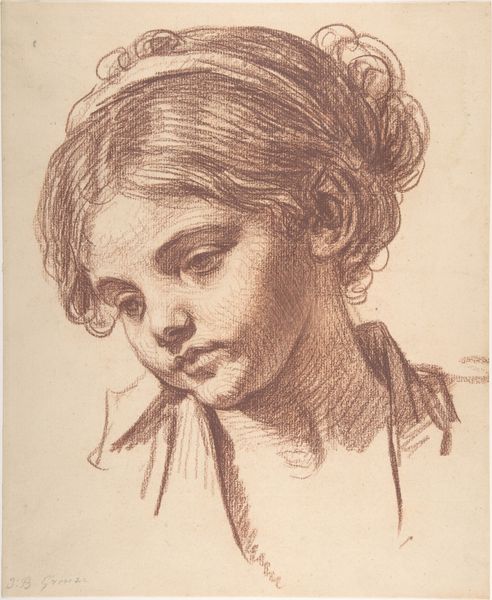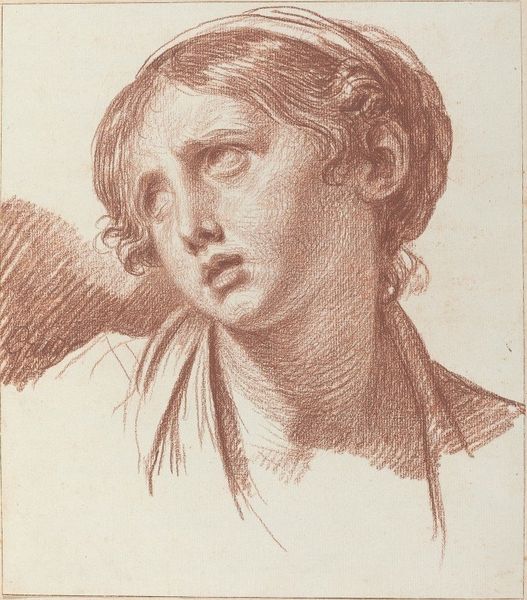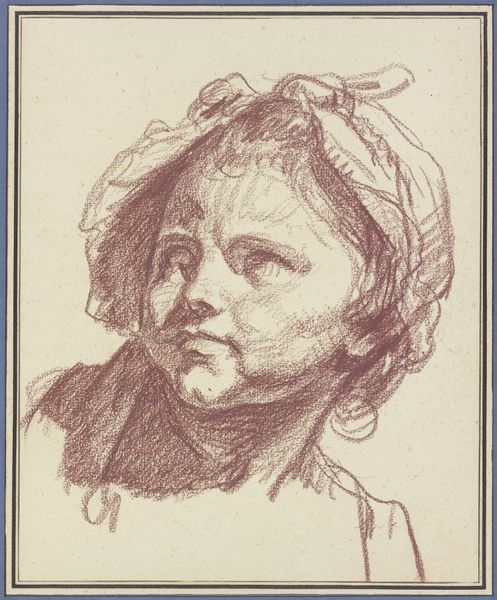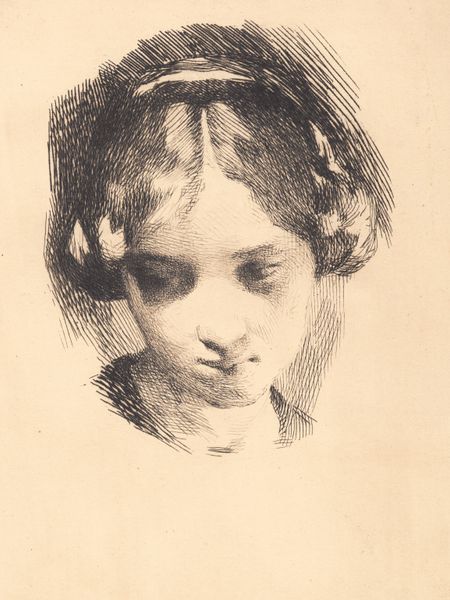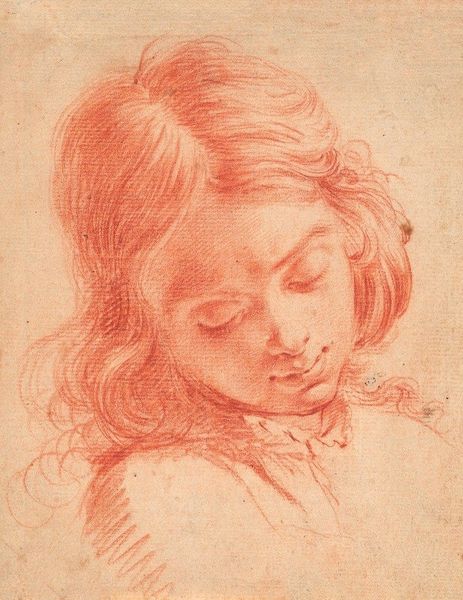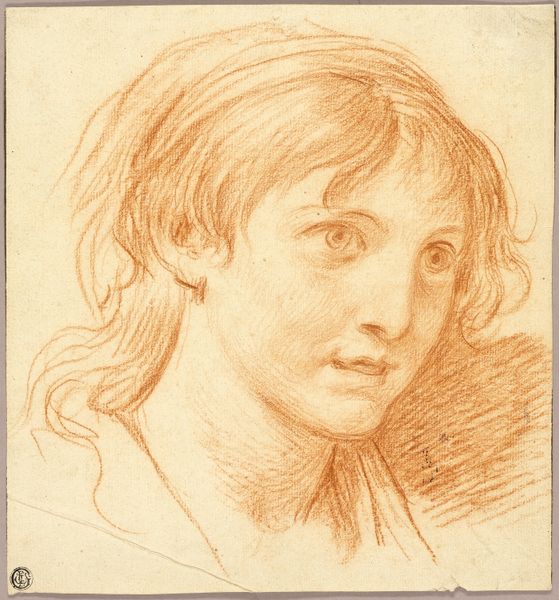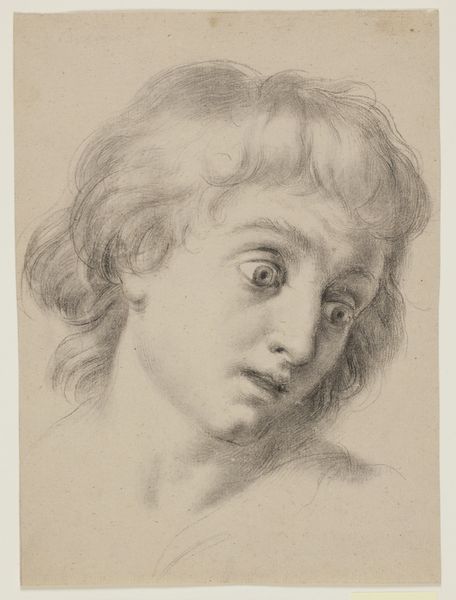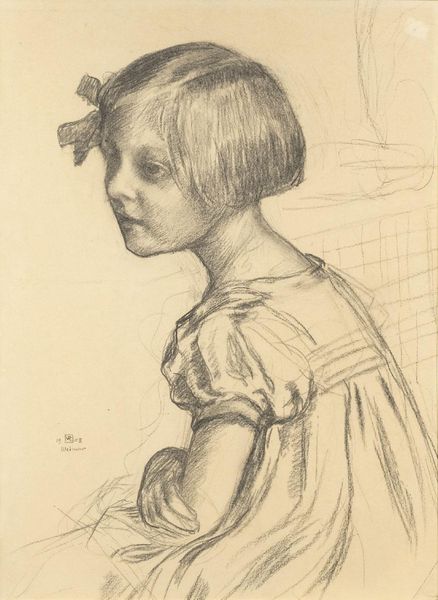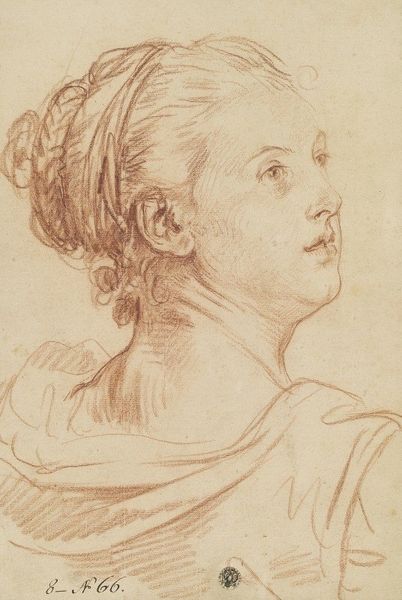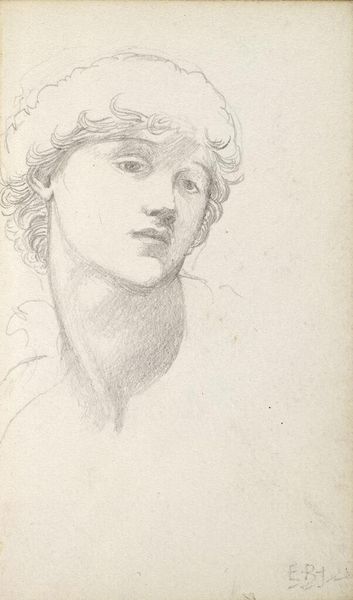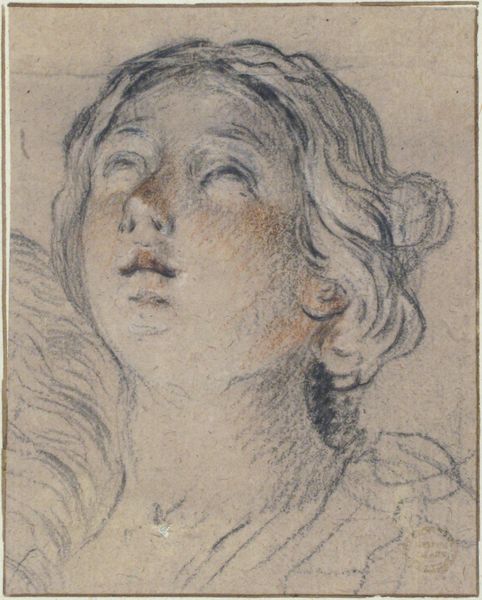
drawing, pencil
#
portrait
#
drawing
#
facial expression drawing
#
neoclassicism
#
pencil sketch
#
figuration
#
form
#
portrait reference
#
pencil drawing
#
pencil
#
animal drawing portrait
#
portrait drawing
#
facial study
#
facial portrait
#
academic-art
#
portrait art
#
digital portrait
Copyright: Public Domain: Artvee
Editor: This is Jean-Baptiste Greuze's "Head of a Girl Looking Up", made with pencil. I'm struck by the soft lines and the delicate rendering of light and shadow; it’s a very subtle portrait. How would you interpret this piece, focusing on the artistic elements themselves? Curator: The work’s effectiveness lies precisely in the contrast between precision and open form. Notice the detailed rendering around the eyes and nose, achieved through dense cross-hatching and subtle gradations in tone. Now consider the looser, more suggestive treatment of the hair and shoulders. This strategic contrast guides the eye, creating a focal point and imbuing the subject with a sense of lifelike presence. How does the positioning of her gaze impact your reading of the drawing? Editor: It draws the eye upward, making me consider what she might be looking at or thinking about. Does that contribute to the form in a structural way, like creating implied lines? Curator: Exactly. The upward gaze extends the implied lines of the neck and face beyond the physical boundaries of the drawing, thereby integrating it with the surrounding space. We could also interpret the open-ended quality of her stare as indicative of the enlightenment and neoclassicist aesthetic, or philosophical thought, that seeks out the unseen and unknowable through human observation and careful depiction. Is this tension also replicated formally between line, negative space and composition? Editor: I see how the detailed versus suggestive contrast, together with the upward gaze creates that open quality within a defined structure. I hadn’t considered the philosophical ties before, thanks for clarifying that point! Curator: I find that by exploring these various methods, we continue to reveal how we consider a work within different contexts of experience and how artworks contain their own visual vocabulary.
Comments
No comments
Be the first to comment and join the conversation on the ultimate creative platform.
